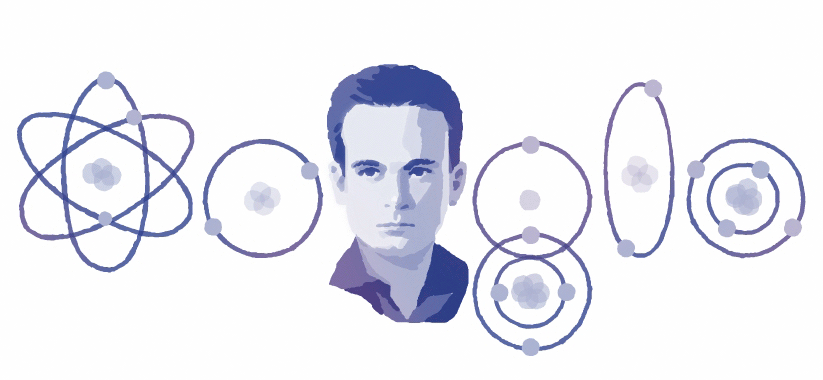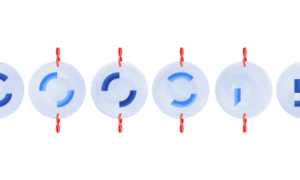This doodle celebrates the 100th birthday of Professor César Lattes, a Brazilian physicist and researcher whose discoveries expanded our understanding of elementary particles. On this day in 1924, Lattes was born in Curitiba, Brazil.
Lattes studied at the University of São Paulo, graduating in 1943 as the only physics student in his class. In his early twenties, he began studying cosmic rays – high-energy particles from space. Lattes correctly surmised that adding boron to photographic plates would give him clearer images of the decaying particles. It worked so well that he could see all the protons.
To get more cosmic rays, a researcher took two photographic plates to the top of the mountain. Lattes’ modified plates showed traces of a particle that had never been observed before: the pions! Pions, or pi mesons, are smaller than atoms and are produced when cosmic matter hits the Earth’s atmosphere. In addition to discovering their existence, Lattes also discovered that some mesons are heavier than others. For this work, his research team was awarded the Nobel Prize in Physics.
Shortly after, Lattes became professor of physics at the University of São Paulo and then at the State University of Campinas. He advocated for increased government funding for science, which led to the creation of the CBPF. The CBPF was a physics research institute of which Lates served as scientific director. He mentored many students who worked on papers in nuclear emulsion (particle detection) and geochronology (rock dating) in Brazil, the United States, and Italy.
Lattes received many awards for his advances in nuclear forces and particle physics, including the Einstein Prize from the Brazilian Academy of Sciences and the Order of Merit from Brazil and Italy. Dozens of schools, streets, and town squares bear his name.
Happy Birthday, César Lattes. Thank you for paving the way for experimental physics in Latin America and around the world!
- Who’s No. 1? NCAA Women’s Lacrosse Committee Releases Latest Rankings - April 18, 2025
- Who Has Won the Most NCAA Women’s Gymnastics Titles? Full List Here - April 18, 2025
- NCAA Women’s Gymnastics Semifinals 2025: When and Where to Watch - April 17, 2025





